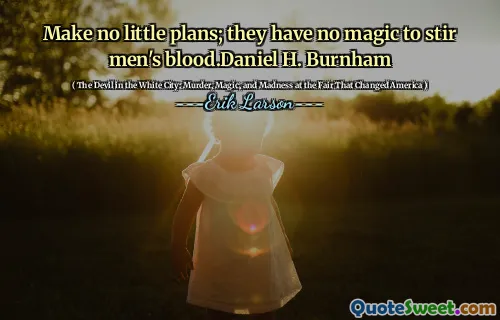He died angry," Chalmers said, "because I didn't believe him. Even in death he is emphatic and imperious.
In Erik Larson's "The Devil in the White City," the narrative intertwines the stories of the 1893 Chicago World's Fair and the chilling activities of serial killer H.H. Holmes. The book explores the contrasting themes of innovation and crime occurring simultaneously during a pivotal moment in American history. The architects and visionaries behind the fair sought to showcase progress, while a dark, menacing figure operated in the shadows, embodying the darker side of human ambition and morality.
Chalmers reflects on the emotional aftermath of his interactions with Holmes, revealing a profound sense of betrayal and disbelief. His statement, "He died angry... because I didn't believe him," encapsulates the tension between how society perceives truth and the deceptive nature of the killer's charm. Even in death, Holmes's presence lingers, leaving a haunting impression that challenges the boundaries of trust and the nature of evil.






